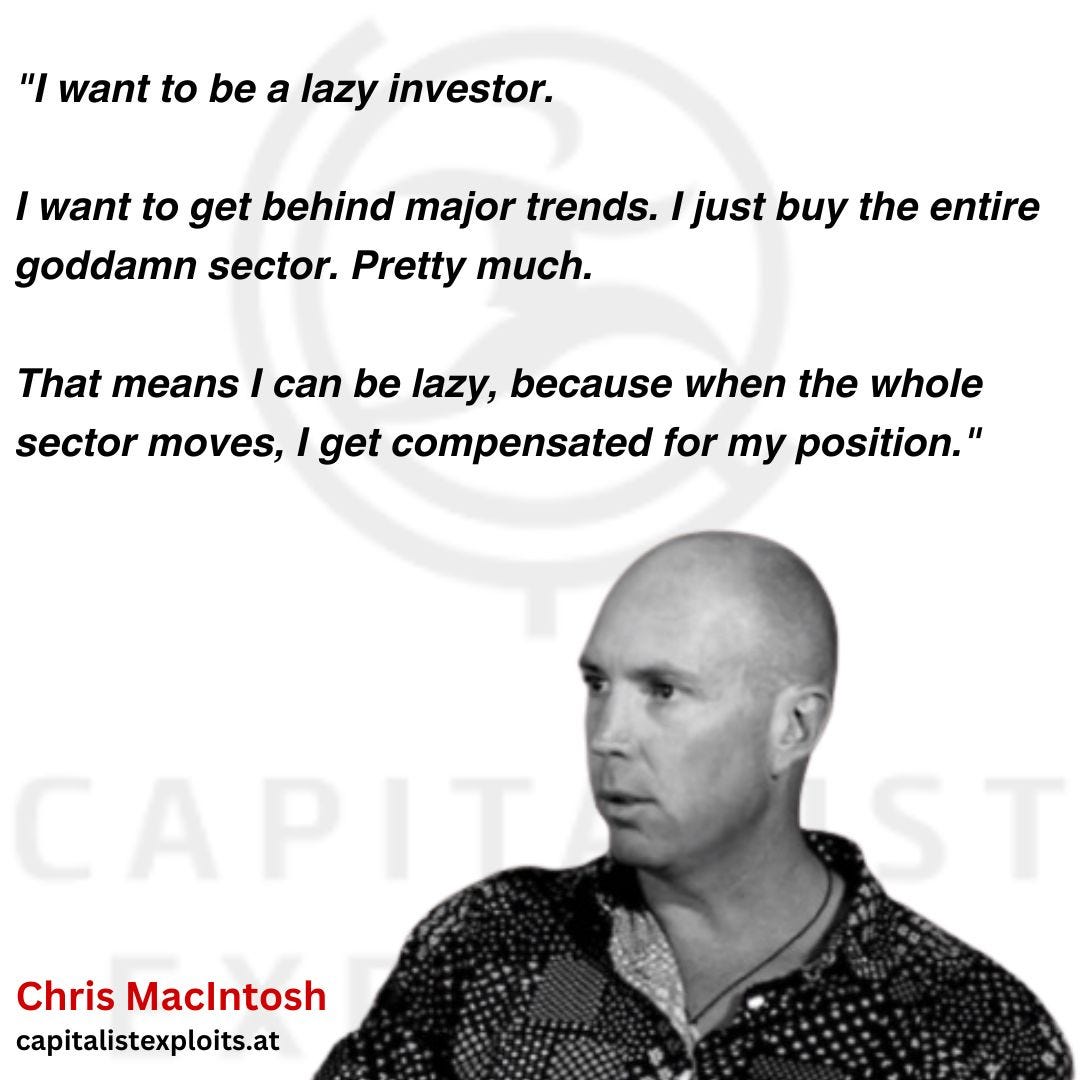Forget Stock Picking
Most investors chase hype, but Chris MacIntosh cracked the code: valuations, sector cycles, and lazy investing. The best part? It’s easier than you think…
Chris MacIntosh recalls a time when he was, in his own words, "an idiot."
Like many investors, he relied on instinct, chasing market momentum and assuming he had an edge.
It was only after experiencing repeated financial setbacks that he had a realization: the secret to long-term success in investing wasn’t about cleverness—it was about making the process as simple as possible.
The Herd is Always Late
"Most investors operate on vibes," MacIntosh explains.
"They hear a hot tip from their neighbor, see a stock climbing on CNBC, and they rush in. But by the time they do, it's too late. They're just handing their money to those who got in early."
He argues that avoiding this common mistake comes down to a single question: Is this thing cheap or expensive? If it's cheap, it’s a buy. If it's expensive, patience is key.
The Real Game is AUM, Not Returns
MacIntosh points out that Wall Street’s professionals aren’t actually playing to win—at least not in the way most people think.
"BlackRock, State Street, mutual funds—they don’t care about market performance.
They care about AUM (Assets Under Management). Their fees are tied to how much money they manage, not how well they perform.
That’s why they underperform the S&P 500 nearly 88% of the time over 15 years," he notes.
"If you’re wondering why they chase trends instead of value, it’s because trends bring in money. Humans do what pays the bills."
Why Valuations Are the Cheat Code
Early in his career, MacIntosh admits he made the classic mistake of chasing stocks that looked exciting but were fundamentally overpriced.
"The market is a casino unless you have a system," he says.
His system? Valuations first.
He screens for dividend yields, cash flows, and when he wants to get particularly detailed, he looks at the Shiller CAPE ratio.
"History doesn’t lie. If you buy when valuations are low—say, when the CAPE is under 10—you can expect 10-12% annualized returns over the next decade. If you buy when valuations are high—CAPE over 25—you’re lucky to get 3%."
Sector Cycles: A Strategy for the Lazy Investor
MacIntosh emphasizes that he doesn’t want to bet on individual stocks.
"Every stock lives within a sector, and sectors move in cycles. I’m lazy. I want the whole sector when it’s been abandoned and left for dead."
Chris MacIntosh didn’t reinvent the wheel—he just stopped betting on noise. But how exactly does he determine when a sector is at rock-bottom and ready to rise?
A prime example? Energy in 2020.
"The sector was down 33%, a disaster. But by the next year, it was up 54%. Goldman Sachs tells us sector rotation beats stock-picking by about 7% a year over two decades. So why fight it?
I buy the whole sector—ETFs, baskets of stocks—and wait. No need to worry about whether some CEO has a midlife crisis or if an earnings call goes off the rails."
Geography Matters, Too
He also considers geography a crucial factor in investing.
"Look at Europe.
They scream ‘renewables or bust’ while quietly importing 22% more coal in 2023 because, surprise, the wind didn’t blow hard enough.
I wouldn’t touch European coal miners with a ten-foot pole. But Indonesia?
They exported $47 billion worth of coal without any apologies. That’s where the money is."
The Boring Beauty of Winning
So what changed in his approach? MacIntosh says the shift was moving from "I feel lucky" to "I have the data."
"I still get a kick out of outsmarting the herd, but now I do it from my couch, coffee in hand, feet up. The best part?
I don’t have to work that hard. Lazy investing works when you let valuations, cycles, and geopolitics do the heavy lifting."
His final advice?
"You can keep chasing trends and hoping for the best, or you can succeed the easy way. But let’s keep that between us, shall we?"




